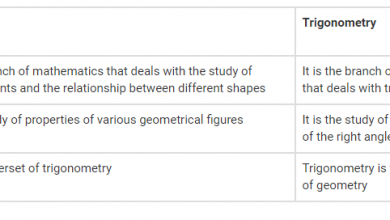What is a Polygon?
A polygon is a two-dimensional geometric shape that has three or more straight sides and angles. The word “polygon” comes from the Greek words “poly,” meaning many, and “gon,” meaning angle. The most basic polygon is the triangle, which has three sides and three angles. However, polygons can have many more sides and angles, and they can come in a variety of shapes and sizes.
interior and exterior angles
One of the most important concepts in understanding polygons is the concept of interior and exterior angles. The interior angle is the angle formed by two consecutive sides of the polygon, and the exterior angle is the angle formed by one side of the polygon and the line extended from the next side. The sum of the interior angles of a polygon can be calculated using the formula: (n-2) * 180, where n is the number of sides in the polygon. This formula can be used to find the sum of the interior angles for any polygon, regardless of the number of sides.
Types of Polygons
There are many different types of polygons, each with its own unique characteristics. The most common types of polygons include:
- Triangles: Triangles are the most basic type of polygon, and they have three sides and three angles. The most common types of triangles include equilateral, isosceles, and scalene triangles.
- Quadrilaterals: Quadrilaterals have four sides and four angles. The most common types of quadrilaterals include squares, rectangles, parallelograms, and rhombuses.
- Pentagons: Pentagons have five sides and five angles. They can be regular or irregular.
- Hexagons: Hexagons have six sides and six angles. They can also be regular or irregular.
- Heptagons: Heptagons has seven sides and seven angles. They can also be regular or irregular.
- Octagons: Octagons have eight sides and eight angles. They can also be regular or irregular.
- Nonagons: Nonagons has nine sides and nine angles. They can also be regular or irregular.
- Decagons: Decagons have ten sides and ten angles. They can also be regular or irregular.
Examples
There are many examples of polygons in everyday life. Some of the most common examples include:
- The sides of a square or rectangular table
- The sides of a playing card
- The edges of a stop sign
- The edges of a soccer field
Polygons can also be used in mathematical and scientific applications. For example, they can be used to calculate the area of a two-dimensional shape or the volume of a three-dimensional shape. They can also be used to model real-world objects and systems, such as the shape of a molecule or the pattern of a crystal.
Conclusion
In conclusion, a polygon is a two-dimensional geometric shape that has three or more straight sides and angles. There are many different types of polygons, each with its own unique characteristics, and they can be used in a wide variety of mathematical and scientific applications. Understanding the concepts of interior and exterior angles, as well as the formulas for calculating the sum of the interior angles, is essential for understanding polygons.
